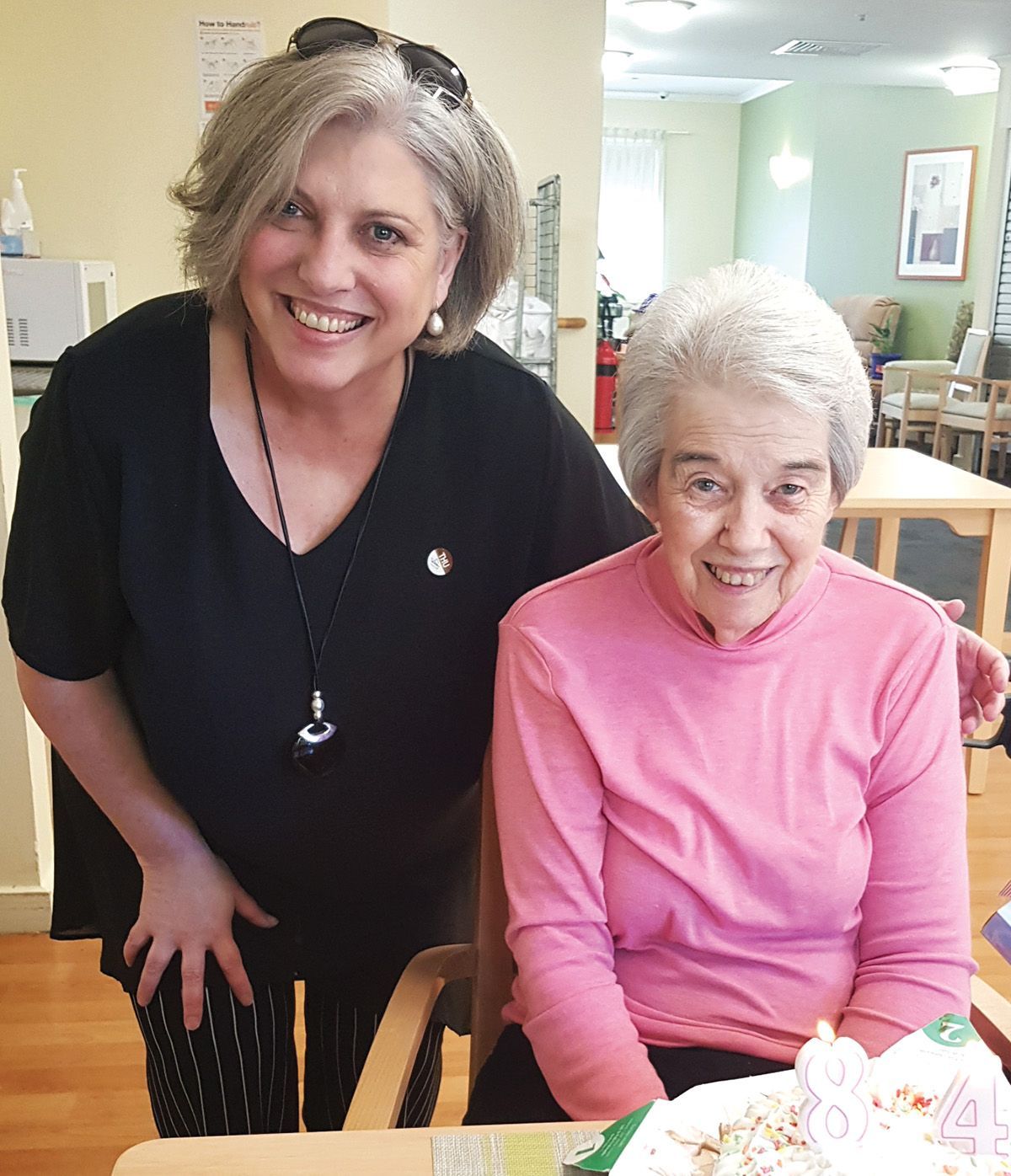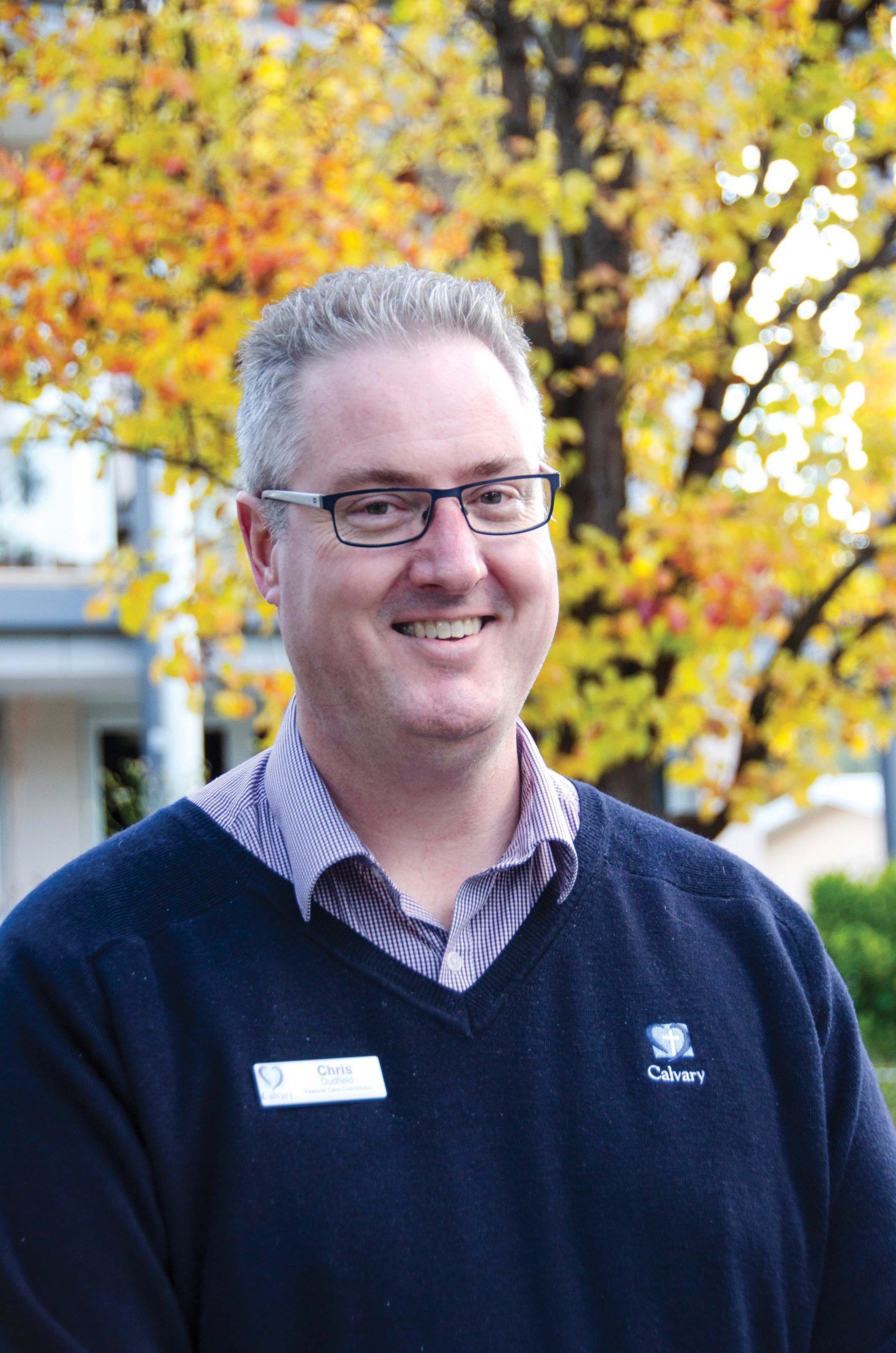Making a hard cross easier to bear

Kathy Brady and mum Elaine
Kathy Brady got to spend much of the final days and hours with her mum Elaine before pneumonia finally claimed the 85-year-old just after Easter.
“It is a difficult period watching someone decline on their final journey,” Kathy says. But she wouldn’t have been anywhere else.
As the week progressed, Elaine, a quiet, measured woman with a big heart, deep faith and keen wit, had the support of a loving family and caring staff at Calvary Haydon which had been her home for the past two years.
Elaine also found extra comfort in the form of a small, wooden holding cross that had been made with care and dignity by volunteers at a local Men’s Shed.
Later, the family would bury their cherished mother and grandmother with the holding cross still in her hand.
“I have no doubt there was a comfort for her, which then stayed with her,” said Kathy.

Chris Dudfield
Pastoral care coordinator Chris Dudfield began providing holding crosses to seriously ill and dying residents after starting in the role at the Bruce residential care home about six months ago.
He had pondered how to better ease residents’ experience, to help calm them if they were agitated. He also wanted something tangible that linked Calvary’s mission of bringing the healing ministry of Jesus to those who are sick, dying and in need, to what people may be experiencing.
The holding crosses have proved therapeutic, calming and practical.
“There was a need for something that was calming for people,” said Chris, who volunteers as a hospital chaplain and is one of three principal chaplains for the ACT Emergency Services.
“In some cases, families are there to hold their loved one’s hand. But families can’t be there all the time, and some people don’t have any support.
“In my experience, people want to feel something tactile, to grip something so that they don’t feel alone. And the body calms down naturally.”
For people of faith, the crosses have a much deeper meaning, symbols that show that they are not alone on their journey. “They show that Christ is with people, even throughout their suffering. Like the women at the foot of the Cross who stayed until the end.”
They also bring hope of the promise of Resurrection.
Holding crosses are not new and are sometimes used in health settings to ease the path for the sick and dying. But in Chris’ experience, the resident or patient or their family first has to know that they exist, and second has to think to ask for them.
He wanted residents to have the opportunity upfront.
Chris has seen the calming effect it has had on people, including Elaine, who had lived with dementia for several years.
“Elaine was in that stage at the end of her life,” he said. “Calming her by voice didn’t work, but then I saw her grip the cross really strongly and it instantly calmed her. Days later she was still clutching the cross as she passed away.”
Kathy recalls her mother drifting in and out of consciousness. “You never know I suppose, but I like to think she was fully aware of what was happening,” she said. “It was comforting, I think. It was a lovely gesture.”
And the fact that the crosses were made by carpenters wasn’t lost on her.
“The delicacy with which it was crafted – it was beautiful and so well made. I think it would give a lot of people and a lot of the residents a lot of comforts,” Kathy said.
Gordon Cooper, president of the Belconnen Community Men’s Shed, says they get more feedback on the crosses than anything else.
“Most of the feedback is about how meaningful and comforting it was for the loved ones to hold the crosses at the end of their life, or how it helped them focus on their faith,” he said.


